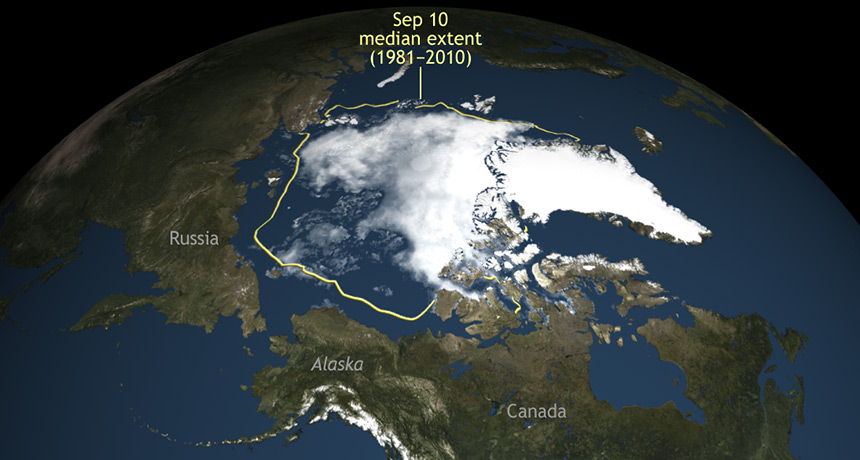Arctic sea ice shrinks to second-lowest low on record

Arctic sea ice reached its smallest extent for the year on September 10, tying for the second-smallest minimum size on record. The orange line marks the 1981 through 2010 average sea ice extent for the date.
NOAA Climate.gov, NSIDC







